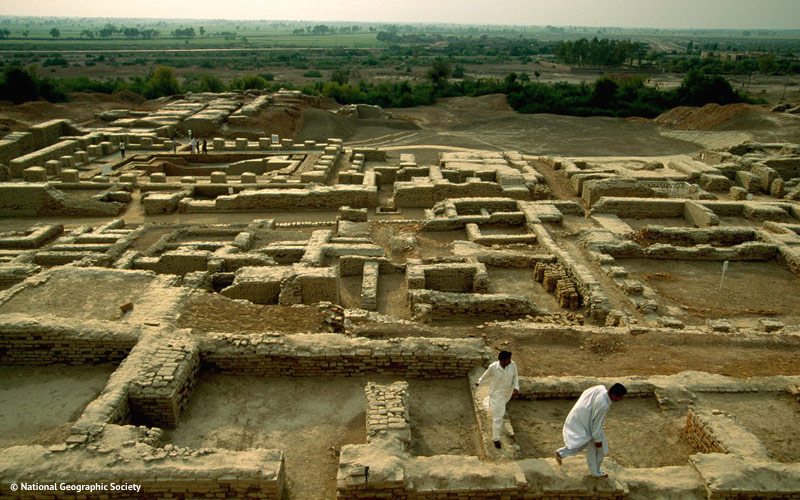Indus Valley Civilization, 3300 B.C. – 1700 B.C.
The Indus Valley civilization is another case where historians and archaeologists are unsure why the civilization ended. The Indus Valley civilization was not discovered until the 1920s in southern Asia, and researchers estimate that it is roughly 4,600 years old and twice the size of the ancient Egyptian and Mesopotamian civilizations.
What makes this civilization unique is the lack of large monuments, tombs, imperial remnants, or even evidence of wars or conflict. It appears that they placed significant value on order, simplicity, and cleanliness. Although they have found evidence of weapons, there are very few, which indicates that this was a very peaceful civilization. Even the excavated human remains show no signs of trauma or violence. They found toys, games, and figurines of what they assume are goddesses.
Among the ruin was a seal that featured what appeared to be a unicorn and an inscription. Similar seals have been excavated throughout the area. They have not deciphered the writing yet, but they appear to all be in the same language. This evidence is somewhat shocking because it is thought that Mesopotamia developed the world’s first script—the Indus Valley civilization may have stolen this title from them.
The buildings were laid out in neat patterns of straight lines, and they were elevated, presumably to avoid the seasonal flooding. Even the bricks used to construct the buildings are of a uniform size, which is unheard of in other civilizations that existed at the same time. Each house had a bath, a connection to the sewage system, and a neighborhood well.
Expand your knowledge universe in just 5 minutes a day via bite-sized email courses.
Share with friends:

